The following is an excerpt from Reopening America: How to Save Lives and Livelihoods, a report published May 28, 2020 where Brookings experts offer ideas to help policymakers protect lives and save livelihoods in the midst of the current COVID-19 pandemic.
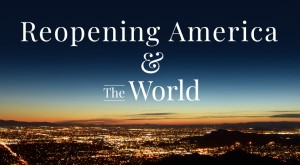 If the country is to begin the reopening process and minimize the chances of a new wave of COVID-19 infections, it will be critical to enable people to stay home when they or a family member is sick or in need of care.
If the country is to begin the reopening process and minimize the chances of a new wave of COVID-19 infections, it will be critical to enable people to stay home when they or a family member is sick or in need of care.
The United States is the only advanced country without a federally mandated paid leave policy. As such, it was ill-prepared when the pandemic hit. In reaction, on March 18, 2020, temporary legislation was enacted to mandate sick leave to stop the spread of the virus and protect the wages of sick workers. The Families First Coronavirus Response Act (FFCRA) provides up to two weeks (10 days) of paid sick leave at 100 percent of an individual’s salary, capped at $511 per day, as well as an additional 10 weeks of paid family and medical leave at two-thirds of the individual’s salary to care for a child who is home due to school or day care closures. However, the legislation is temporary and will expire at the end of this year. It should be extended and the opportunity taken to consider whether more permanent changes are needed.
PRE-COVID-19 SICK LEAVE POLICY IN THE UNITED STATES
Among OECD countries, 32 out of the 34 guarantee paid sick leave, and the United States is the only country that does not guarantee any type of paid leave. Although the U.S. has no national policy on sick leave, there are currently 12 states and the District of Columbia, as well as several jurisdictions, that mandate employers in their region to provide paid sick leave. Even outside of these states and jurisdictions, many employers do offer paid sick leave to their employees. According to the Bureau of Labor Statistics, 76 percent of workers have access to paid sick leave, as of March 2019. However, when examining the breakdown of paid sick leave by wage, occupation, and employer size, we see wide gaps in access and availability. For workers with the lowest 10 percent of wages, only 31 percent have access to paid sick leave, compared with 94 percent of the workers with the highest 10 percent of wages.
In particular, workers in many of the services that have been hardest hit by the virus, including many workers who interact regularly with others as part of their job, lack paid sick leave. For example, only 61 percent of workers in services such food and beverage preparation, cleaning and building service, and personal services—such as barbers, flight attendants, and child care workers—have access. This is in contrast to the 94 percent of workers in management, business, or financial jobs who have access to sick leave, although many of these workers are able to successfully telework.
In short, about a quarter of workers have no paid sick leave at all and those most likely to lack access are those in low-wage work that requires significant personal interaction, and where a few days or a week off from work to recover from an illness may mean a substantial loss in wages.
WHAT IS COVERED UNDER FFCRA?
Although FFCRA was a welcomed attempt to fill a pre-COVID-19 gap, by providing paid sick leave and paid family leave for a subset of workers those working for large firms (more than 500 employees) were excluded entirely, and other exclusions may apply to employees of healthcare providers, such as hospitals and nursing homes, and firms with fewer than 50 employees. This exclusion of healthcare workers is odd. Of course, they are essential but why should they be penalized if they get sick or have to self-quarantine due to exposure?
The temporary legislation leaves out a huge chunk of workers who were uncovered before, especially lower-wage workers and, in some cases, those in smaller firms. The new law did extend some, more modest, partially paid family leave benefits to those caring for children if the child’s school or child care center was closed.
…we need a new social contract around illness that says you must stay home if you are sick. But we will continue to pay you if you do so.
LESSONS LEARNED FROM COVID-19
The novel coronavirus is highly infectious, and it is deadlier than the flu. Every person infected tends to transmit the virus to about 2 other people in the absence of social distancing or other mitigating factors.
So, if we want to contain the spread of this virus, including any subsequent waves that may occur before we find a safe vaccine or achieve herd immunity, then paying people to self-isolate when they are sick is an imperative. Some people, to be sure, will be asymptomatic (or pre-symptomatic). The solution here is more widespread testing. Others will have such mild symptoms that they may not see the need to stay home. In the case of those with mild symptoms, it will be important to inculcate a new ethic of responsibility toward others to replace the current ethic of work-comes-first. Employers and supervisors are part of the problem—they tend to reward those who always show up and not those who choose to stay home. That must change.
In short, we need a new social contract around illness that says you must stay home if you are sick. But we will continue to pay you if you do so.
WHAT MIGHT A BETTER POLICY LOOK LIKE?
First, the FFCRA must be extended until the pandemic has subsided and there is widespread vaccination, which will almost certainly not happen until 2021. In the process of extending the act, Congress should expand its coverage to include all workers and not just some. The exclusion of health workers, small businesses, and lower-wage workers in large companies makes no sense either in terms of public health or in terms of supporting the victims of the virus.
While reopening safely should be the priority, Congress may want to address some larger questions in the process—and see this as an opportunity to re-evaluate existing and proposed legislation. Currently, the Family and Medical Leave Act allows workers to take up to 12 weeks of unpaid leave for the birth of a child, to care for a close relative, or to recover or seek treatment for a serious health condition. Many people believe such leave should be paid instead of unpaid, and the FAMILY Act, legislation introduced by Senator Kristin Gillibrand (D-N.Y.) and Representative Rosa DeLauro (D-Conn.), would accomplish that goal. In addition, the Healthy Families Act, which was reintroduced by Senator Patty Murray (D-Wash.) last year, but has not been passed, proposes allowing workers with 15 or more employees to earn one hour (at minimum) of paid sick leave time for every 30 hours worked, with a cap of 7 days of paid lave per year. Small firms under 15 employees would be mandated to offer unpaid sick leave.
While the FFCRA puts paid sick and family leave at the forefront of the policy agenda, a long-term policy solution that covers paid sick, family, and medical leave poses a host of important questions to consider. Can we design a sick leave policy not just for these troubling times but for after things have returned to normal? Should we also provide a temporary disability program that partially covers the wages of those who need to take not just short-term sick leave but a more extended period away from work because they become seriously ill, are hospitalized, and need weeks, not just days to fully recover? And how much paid leave should be guaranteed for a new parent or one who needs to stay home with a sick child or deal with the closure of schools and day care centers? Or a worker whose elderly parent needs care? These questions are not new – just more pressing in the wake of the current crisis. A more in-depth look at these questions is being pursued by an AEI-Brookings initiative on paid family and medical leave.
Reopening the economy successfully means not asking people to choose between a paycheck and their health. It also means recognizing the impact on the health of the entire community when sick people go to work or their children go to school or to day care because their parents cannot afford to stay home. The costs on businesses and other organizations are likely very minor compared to the savings associated with keeping employees and customers healthy.
The Brookings Institution is committed to quality, independence, and impact.
We are supported by a diverse array of funders. In line with our values and policies, each Brookings publication represents the sole views of its author(s).
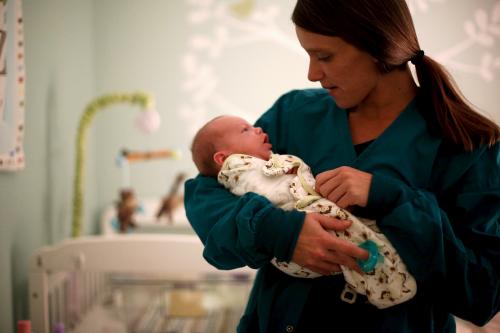
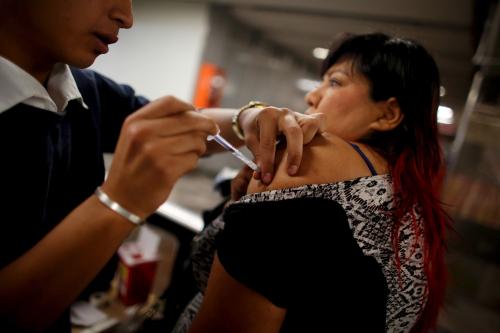
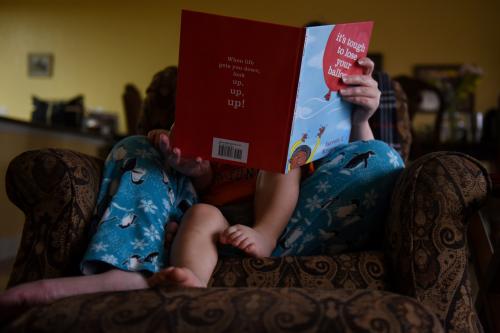


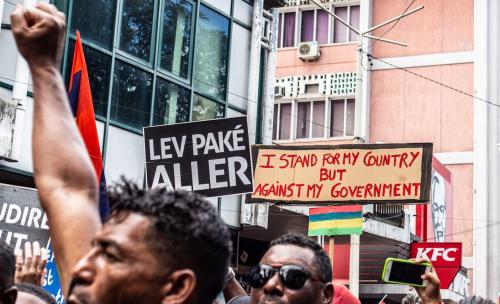
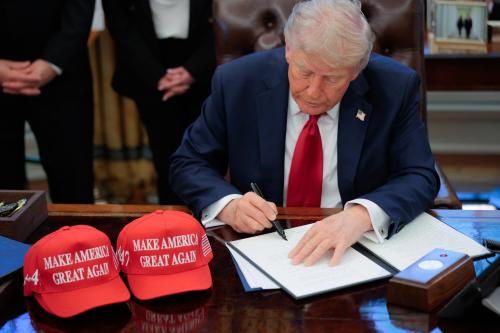
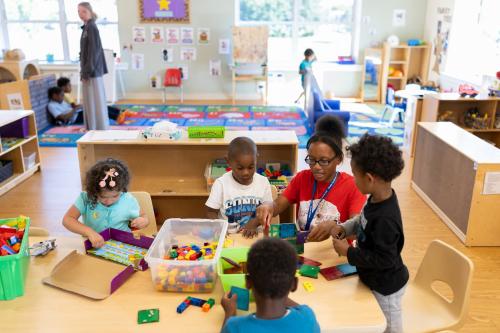
Commentary
Reopening America: We shouldn’t reopen the economy without paid sick and family leave
July 2, 2020